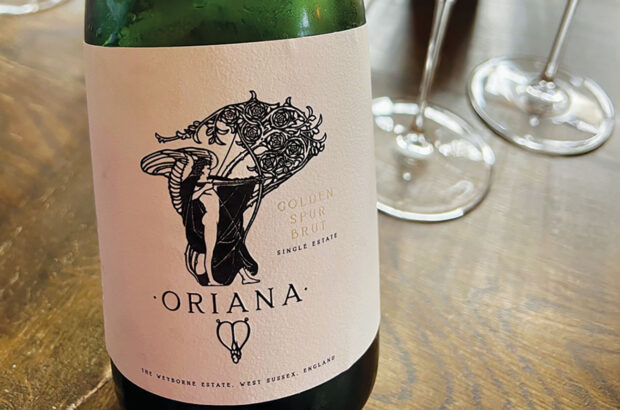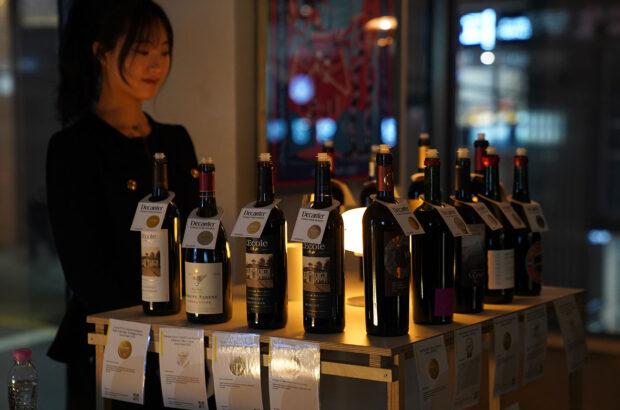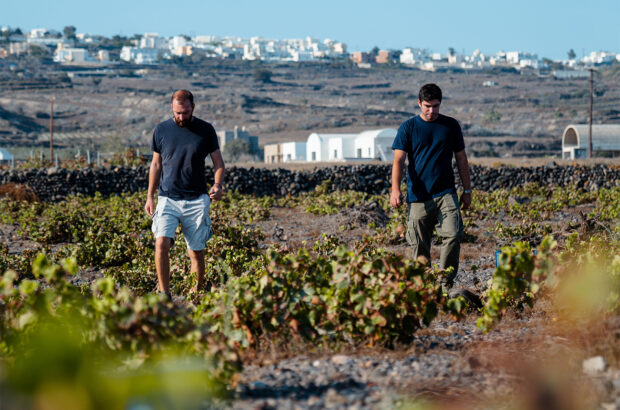Trends come and go in wine, just as they do in fashion. If the 1990s were about gleaming stainless steel in the winery and vineyards as immaculately coiffed as a prize poodle, so the shift of the last ten to fifteen years has been back towards something less controlled. In the winery, it means old oak and natural ferments; in the fields, it’s more unruly vines, vegetation in between the rows and – crucially – the absolute minimum of (or even zero) spraying. Increasingly, winemakers and growers are being as hands-off as possible.
The shift to lower intervention is done with the very best of intentions – safeguarding the environment and providing a more authentic expression of the land. But it’s not easy. The classic wine grapes (Pinot Noir, Chardonnay, Nebbiolo et al) are all vitis vinifera: elegant, high-toned thoroughbreds.
But like all thoroughbreds they need a degree of looking after. Marginal climates and minimal help with bug and rot control don’t suit them, so being hands-off in the vineyard is tough. Climate change, ushering in, as it has, more extreme weather conditions (usually hotter, often wetter), has made things even harder.
All of which explains why interest is burgeoning in hybrid grape varieties. Also called PiWis (short for the German word Pilzwiderstandsfähig, meaning ‘fungus resistant’), hybrids are a cross between a vitis vinifera variety and a variety from another species of the grapevine family – usually vitis labrusca.
Vitis labrusca (native to the US) are less fine in their flavours, but – crucially – much hardier. Pairing them with a vitis vinifera, so the thinking goes, gives the best of both worlds: grapes with good taste and structure but that are naturally healthy without relying so heavily on herb- and pesticides.
Hybrids are not, incidentally, to be confused with varieties that are created by a mix of two vitis vinifera. This is a crossing. Pinotage (Cinsault x Pinot Noir) is a good man-made example; Cabernet Sauvignon (Cabernet Franc x Sauvignon Blanc) one that occurred naturally.
Hybrids have been around longer than you might think, but their resilience meant they were often used to knock out large volumes with minimal effort and acquired a bad reputation as a result. The French government pushed for them to be ripped out and there were pretty much none left in the country by the 1970s.
But climate change, lower intervention and some really interesting new varieties are seeing a renaissance. Sometimes they are blended with ‘classic varieties’, or each other, but there are single varietal wines too. Varieties such as (red) Cabernet Noir and (white) Souvignier Gris are relatively new, but already gaining an impressive reputation, and others are sure to follow.
Vineyards are often still quite young – this is still a movement that is in its early stages – and the numbers are still small. PiWis are only 3.5% of Germany’s vineyard area, for instance. But there is energy in the category and they are growing steadily.
So can we expect to see bottles of Solaris, Orion and Cabernet Jura alongside Pinot Grigio and Shiraz on retailers’ shelves in ten years’ time?
We spoke to some growers at different stages of their PiWi journey to find out how they use them and what they think the future might hold.
Fabian Zähringer
Weingut Zähringer, Baden

Credit: L.Greiner / Medienagenten
Fabian’s father was a pioneer of organic winemaking in Baden in the late 1980s and put in his first hybrid vines in the mid-1990s because they were more resistant to mildew. Over the last 30 years they’ve steadily put in more and more, and PiWis now make up 20% of their vineyard. Fabian expects them to top out at around 30-50% of the total in future.
‘In general the hybrids are much better for us in the vineyards,’ says Fabian. ‘They’re a lot less work and need less protection. They just need a lot less in the way of treatments, which means less expense on diesel for the tractors and so on. PiWis are one of the most important tools we have in meeting the challenges of climate change.
‘Hybrids have been developed with certain aims. Most of the have a very thick skin so they’re more resistant to oidium, botrytis and so on. Managing the tannins is the big challenge.
‘There are two generations of PiWis. Those planted in the 1990s are mostly behind the new ones, which are more resistant. But we really like [red] Johanniter from this first generation – it’s a very important component for our basic sparkling wine.
‘It’s easier to choose a favourite white. Souvignier Gris we really like. It’s amazing in the vineyard – very small, loose berries that are extremely healthy. It’s life-changing when you see the first berries. They’re so small and healthy and they taste good!
‘There are some challenges in the vineyard and the winery with PiWis, but the biggest challenge is the market. The last five years there’s been a much more positive attitude – a boom even. But the classical varieties have a much stronger position. They’ve known things like Chardonnay for centuries – much longer than Johanniter and Négrette.’
Roman Tournier
Roman Des Vignes (formerly Wine Impact), Toulouse

Viticulture is just a part of Tournier’s farm in southwest France. Until recently he sold his grapes to the local co-op, but after studying oenology and doing internships around the world, Roman is keen to build an own label – and use hybrids to do it. Currently, he buys fruit from local growers, but is intending to replant their own vineyards with hybrid varieties in the next two years.
‘I was struck by the reality of climate change in our region,’ says Roman. ‘A lot of rain during spring. And you could have 30mm of rain one day, and then over 20°C the next. That’s the perfect conditions for diseases like powdery mildew, oidium and black rot. If I’m going to make my own wine, I want it to have a future – not to lose a lot of my vintage because of diseases! With PiWis you have better yields and more reliable quality and you save on treatments, so cost is a big advantage.
‘I didn’t know a lot about hybrid grapes at first, but in Occitanie we have the most hybrid grapes planted in France, so I didn’t have to travel far to taste them. That’s how I chose the ones I’d use.
‘My favourite varieties are Souvignier Gris, which has some bitterness and exotic fruit aromas, but is light and low in alcohol. I blend it with Muscaris, which is a child of Muscat, to make a wine that is seductive and exotic, but has balance and freshness.
‘For reds, I like Cabernet Jura, which has very ripe, black fruit on the nose, but there’s more balance and acidity in the mouth than you would expect. For me those are positive things, but people can be surprised by the difference.
‘People not being familiar with the varieties is the big issue, so perhaps I’ll blend them with traditional varieties to provide a “hook”.
‘For sure, though, the challenges we face are going to be harder and harder each year. I’m really convinced PiWis are the future in my region.’
Guillaume Lagger
The Wharie Experience, Hampshire
Guillaume first became interested in PiWis when studying viticulture and winemaking in his native Switzerland in 2017. Until now he has bought in fruit (about half and half PiWis / vitis vinifera) but in 2021 he planted his entire Hampshire vineyard to hybrids and is excited to be harvesting his first crop this summer.
‘I haven’t sprayed my vineyard at all since I planted it,’ he says. ‘If I have to I’ll use copper maybe twice a year, compared to 15 times a year for vitis vinifera. That’s a big saving, but yields for PiWis can also be quite big. You need to be careful not to overcrop them, but they are definitely more regular in quantity than vitis vinifera. That’s very helpful because there can be huge variations between vintages in the UK.
‘I’ve planted nine PiWis – five white and four red. Varieties like Souvignier Gris, Solaris, Divico, Cabernet Noir and Muscaris. One of them – Cal 128 – is so new it doesn’t even have an official name yet; that’s its breeding number! I’ve never tried an English Souvignier Gris, but I’d like to do a late-harvest style, like Alsace or German Pinot Gris.
‘Because of the thicker skins on the reds you need to be careful with tannin extraction. In 2022 my Cabernet Noir was only on the skins for eight days. We just need to learn how to make these new varieties – a bit like if a northern French Pinot Noir grower went to make wine in Spain and had to work with Tempranillo for the first time.
‘The PiWis generally ripen earlier. Solaris, for instance, ripens two weeks before Müller-Thurgau, which ripens two to three weeks before Chardonnay. The ideal time for ripening is mid-September to mid-October. If you have a variety that ripens regularly on 25 October, it’s probably not suitable for the UK!
‘I think and hope that we’ll see more of these hybrids in ten years’ time. Maybe not if you’re a sparkling producer, but definitely for smaller growers of still wine. It will take time, but when people see what these grapes can do that will inspire more producers.’






